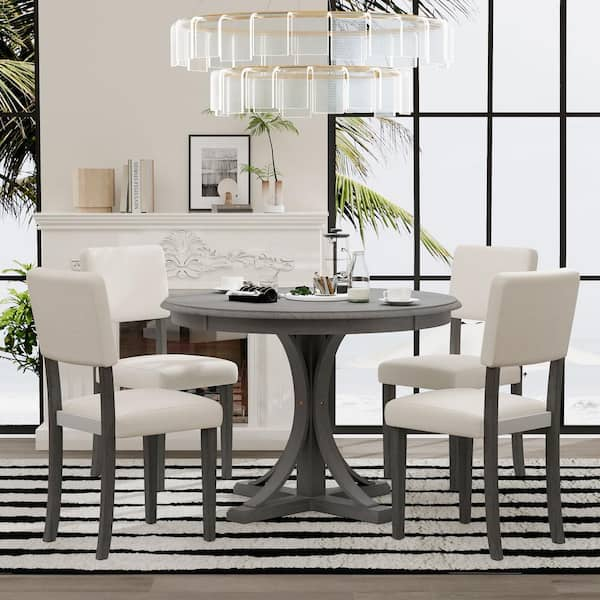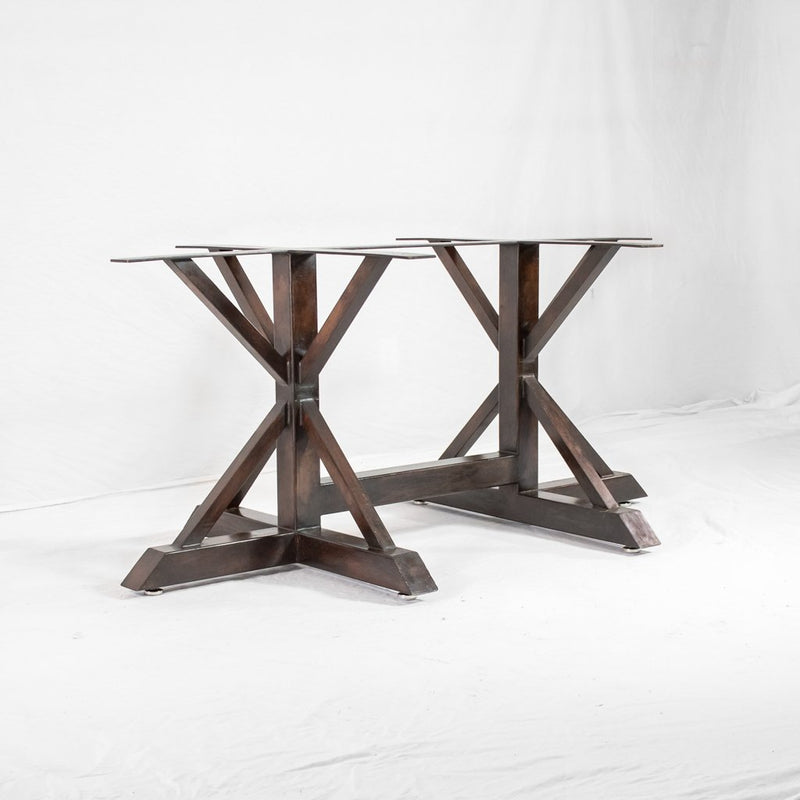The Best Materials for Durable and Elegant Dining Room Table Legs
The Best Materials for Durable and Elegant Dining Room Table Legs
Blog Article
From Typical to Modern: Discover the Ideal Dining-room Table Legs for Your Design
The option of dining-room table legs plays a critical role in defining the overall character of your room, connecting the gap between conventional craftsmanship and modern aesthetic appeals. While traditional layouts such as cabriole and transformed legs stimulate a sense of classic refinement, modern designs like hairpin and geometric choices present a chance for striking aesthetic interest. Examining the right equilibrium in between these designs requires a nuanced understanding of your existing design and individual preference. As you think about these elements, the question stays: exactly how can you effortlessly incorporate these diverse leg styles to create a harmonious eating experience?
Recognizing Table Leg Styles
The selection of dining-room table leg styles can substantially influence both the looks and functionality of the area. Each leg style contributes unique sensible attributes and aesthetic elements, providing to varied layout preferences and usage demands. Comprehending these styles is crucial for choosing the ideal eating table that lines up with your overall interior layout vision.
For circumstances, conical legs offer a clean, classic appearance that can improve an area's elegance, while pedestal bases give stability and make the most of legroom, making them perfect for smaller sized rooms. Hairpin legs, a hallmark of mid-century modern-day layout, introduce a commercial panache, permitting a ventilated, open feel. Trestle legs evoke rustic beauty, offering robust support and a sense of eternity.
Wooden legs can bring warmth and texture, whereas metal choices typically convey a smooth, modern vibe. Inevitably, comprehending table leg designs is important for creating a natural dining location that reflects personal design while ensuring practicality and convenience.
Typical Table Leg Options
When choosing eating space table legs, traditional options frequently personify classic beauty and workmanship. These designs show a rich heritage and a dedication to quality, making them suitable for those who value timeless visual appeals.
Among the most renowned traditional leg designs is the cabriole leg, characterized by its elegant rounded form. This style commonly includes ornamental makings and is most commonly located in Queen Anne and Chippendale furniture. An additional popular alternative is the turned leg, which flaunts a collection of smooth, rounded forms that provide a classic appearance while preserving security.
Moreover, the straight leg, while easy, uses a sturdy and unadorned structure that can blend effortlessly with a range of tabletop styles. For those attracted to ornate detailing, claw-and-ball feet legs evoke a feeling of grandeur and can function as a stunning prime focus in any type of dining area.
Finally, stand bases, although not purely legs, give an alternative traditional option that allows for ample legroom and can be beautifully carved. Each of these standard leg styles adds to the total atmosphere of an eating room, weding function with visual allure.

Modern Table Leg Styles
Modern table leg styles supply a varied variety of designs that highlight ingenious products and tidy lines. These layouts usually prioritize capability while working as striking centerpieces within an eating area. Minimal aesthetics prevail, with legs crafted from products such as steel, glass, and crafted timber, which add to a modern and airy feel.
One preferred layout is the hairpin leg, identified by its slim, conical framework that gives stability without overwhelming the table top (dining room table legs). This design is often discovered in mid-century modern furnishings and can effortlessly complement various eating table forms. An additional fad is the usage of geometric shapes, where legs may take on angular or asymmetrical forms, including aesthetic passion and a touch of virtuosity

Mixing Styles for Unique Rooms
Commonly, homeowners look for to produce distinct dining areas that mirror their individual design by blending various style components. This method enables the consolidation of diverse looks, resulting in a harmonious yet distinct environment. As an example, coupling a rustic wooden table with streamlined, modern steel legs can produce an appealing contrast that boosts the room's general allure.
Furthermore, more information incorporating vintage table legs with contemporary table tops can evoke a sense of history while keeping a modern-day perceptiveness. Such mixes not only display specific preference but also motivate imagination, allowing house owners to curate an area that feels both personal and inviting.
Shade plays a crucial duty in this blending procedure; picking table legs that match or comparison with the existing color pattern can improve visual rate of interest. As an example, whitewashed legs can soften the daring of a dark table surface area, developing a well balanced aesthetic.
Tips for Selecting the Right Legs
Picking the right Full Article table legs is crucial for achieving both functionality and visual allure in your dining area. Begin by taking into consideration the overall design of your room. Standard settings take advantage of legs that feature intricate makings or turned styles, while contemporary rooms might ask for smooth, minimalist styles.
Next, evaluate the elevation and stability of the legs. dining room table legs. Standard dining tables range in between 28 to 30 inches in elevation, so make certain the legs match this dimension for comfort. Furthermore, durable materials, such as hardwood or metal, can boost stability and longevity
Assess the leg form also-- alternatives consist of right, tapered, or pedestal layouts. Straight legs use a traditional appearance, while conical legs can include a touch of sophistication. Pedestal bases offer ample legroom and are ideal for smaller spaces.
Final Thought
In summary, selecting the perfect dining space table legs needs careful consideration of both standard and contemporary designs. By integrating leg style, elevation, and material with the total decor, a natural and inviting atmosphere can be achieved.
The variety of eating space table leg styles check my reference can substantially influence both the appearances and performance of the room. Inevitably, comprehending table leg styles is vital for developing a cohesive dining area that shows individual design while ensuring practicality and comfort.One of the most iconic conventional leg designs is the cabriole leg, identified by its stylish curved shape. Straight legs use a timeless appearance, while tapered legs can add a touch of sophistication.In summary, choosing the optimal dining space table legs requires careful factor to consider of both conventional and modern-day styles.
Report this page